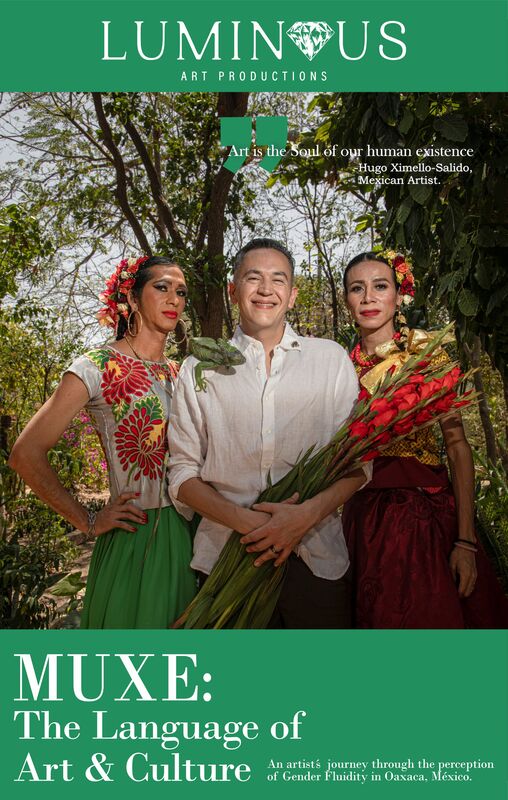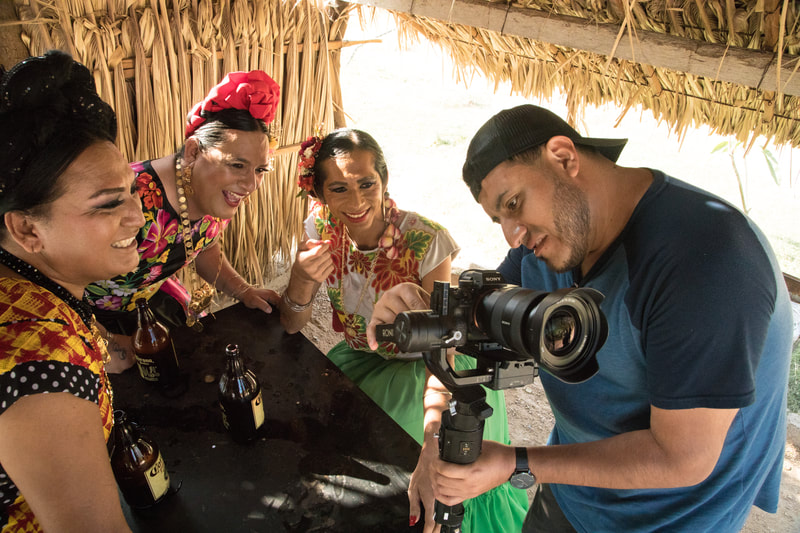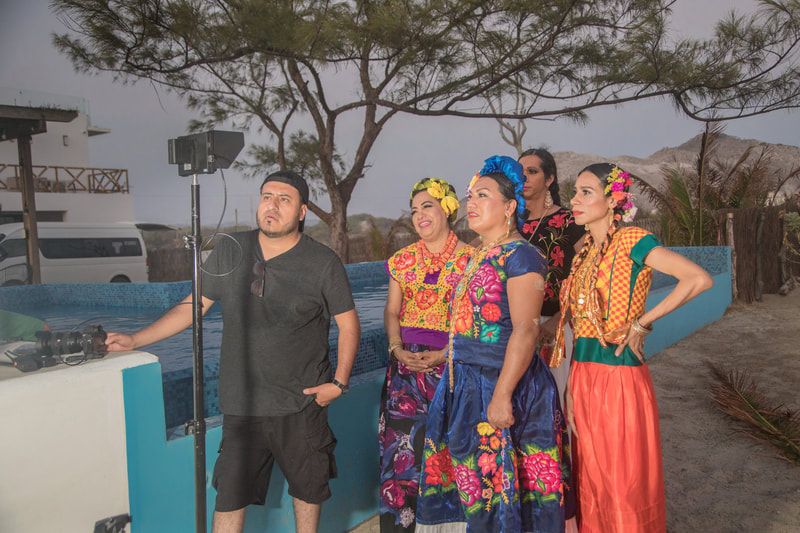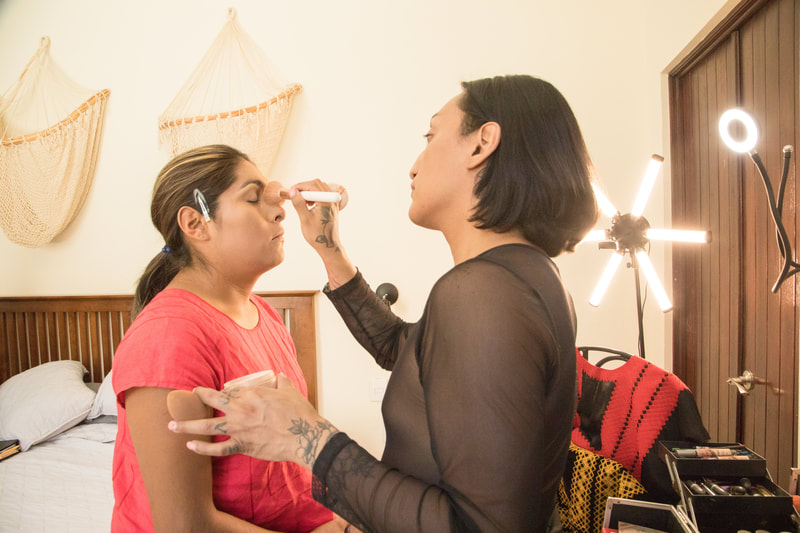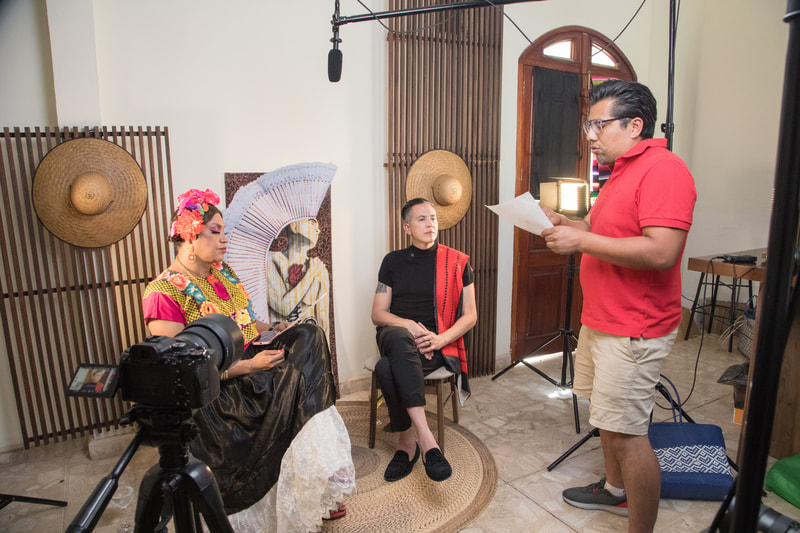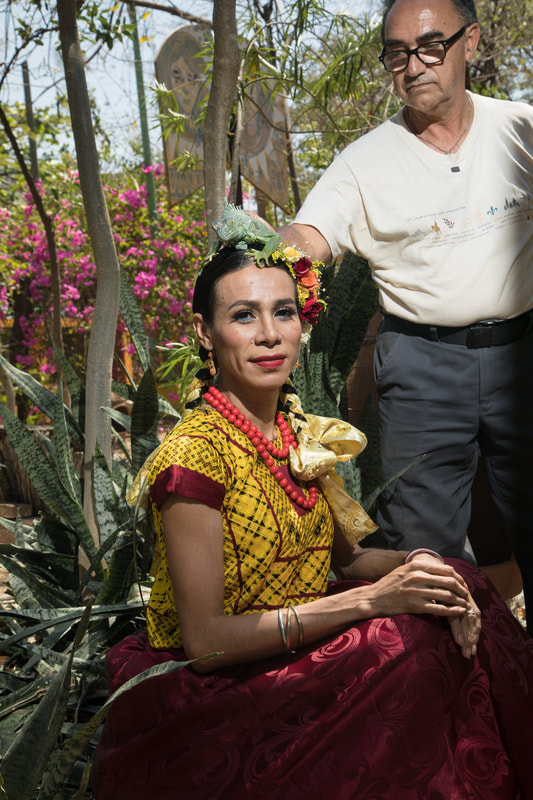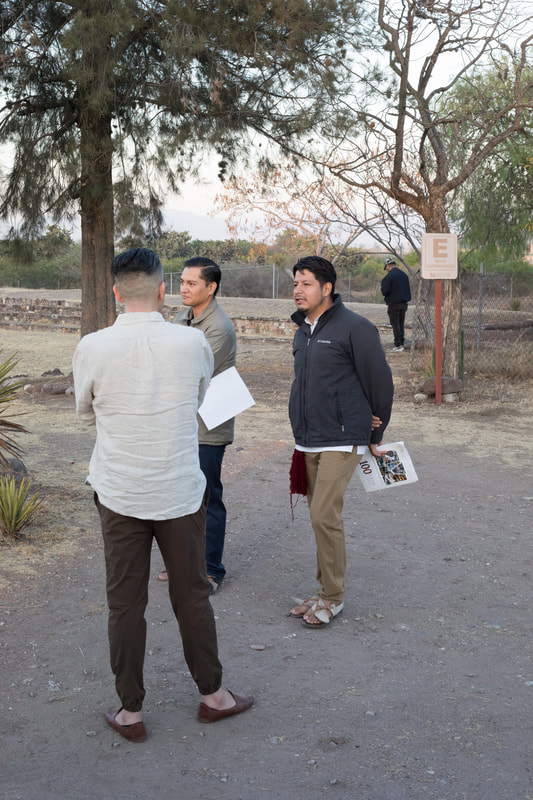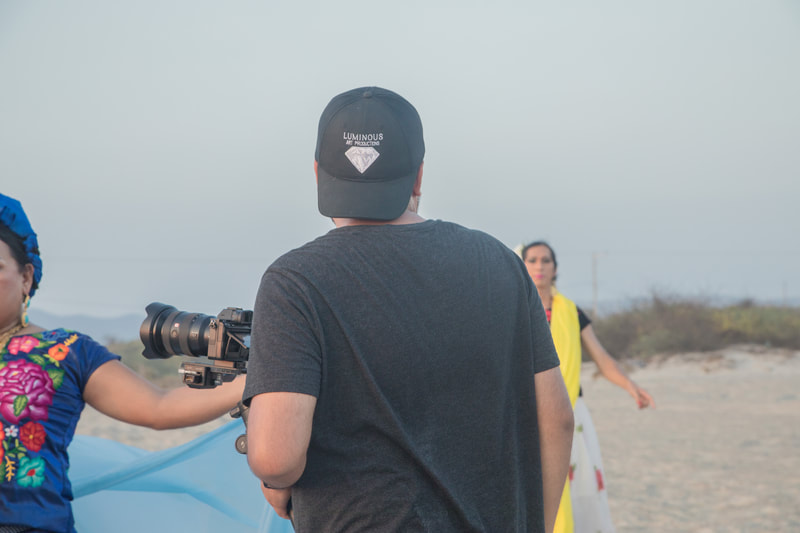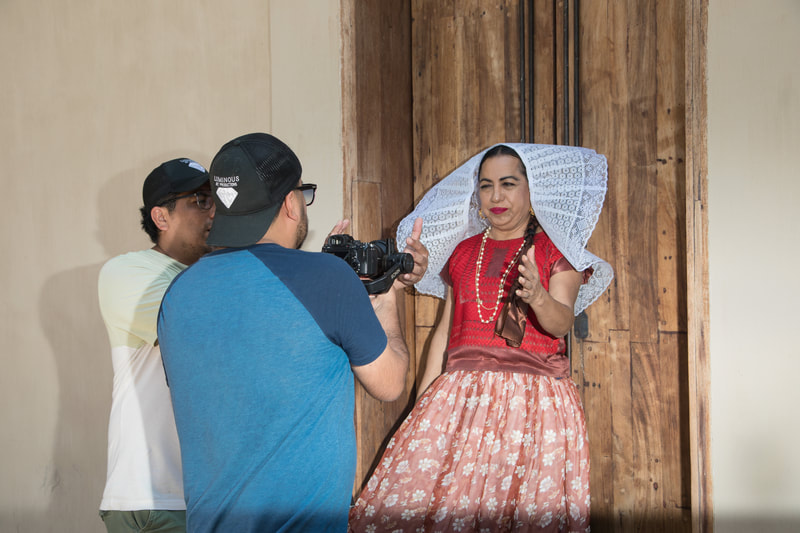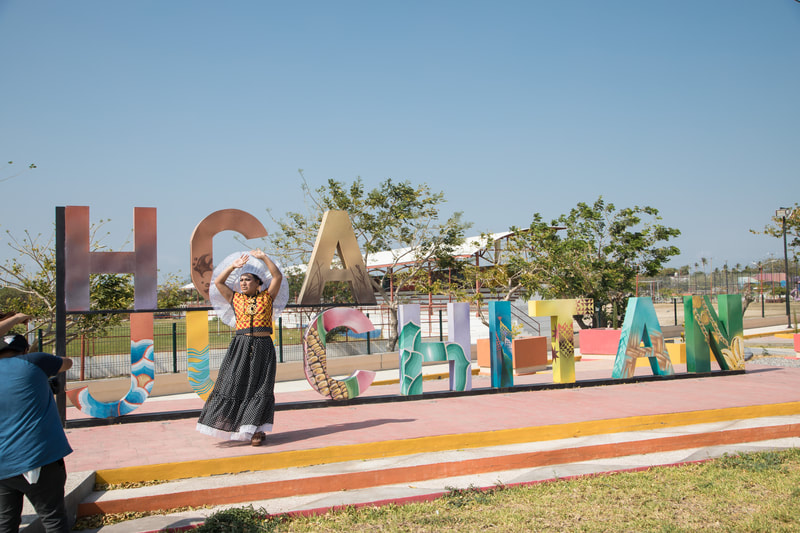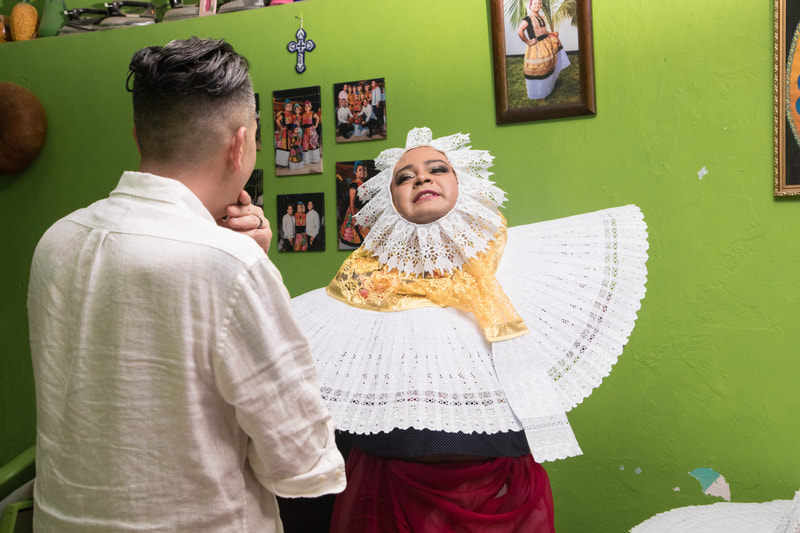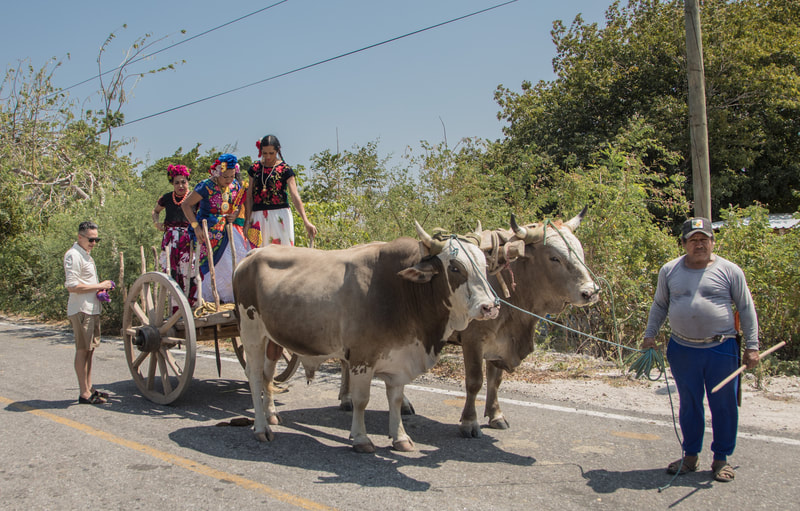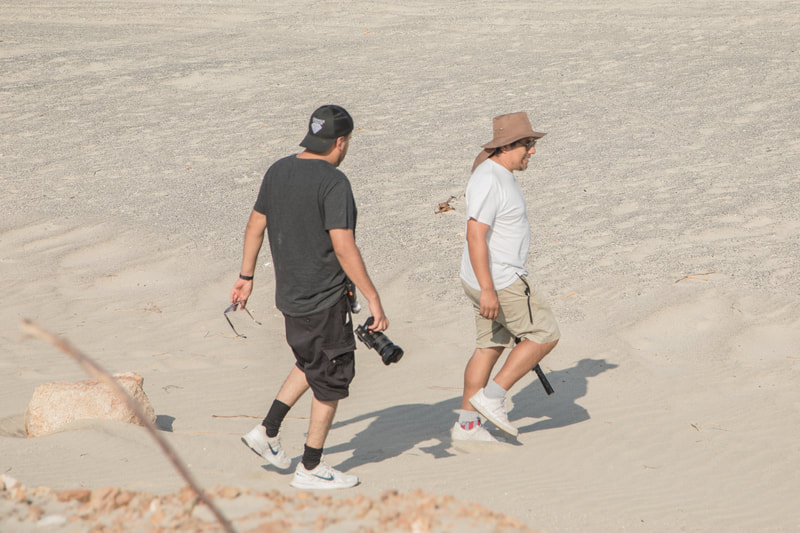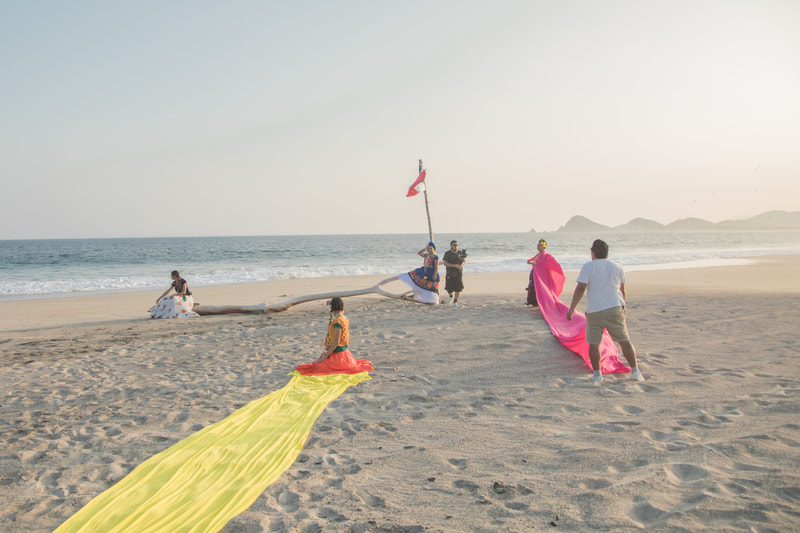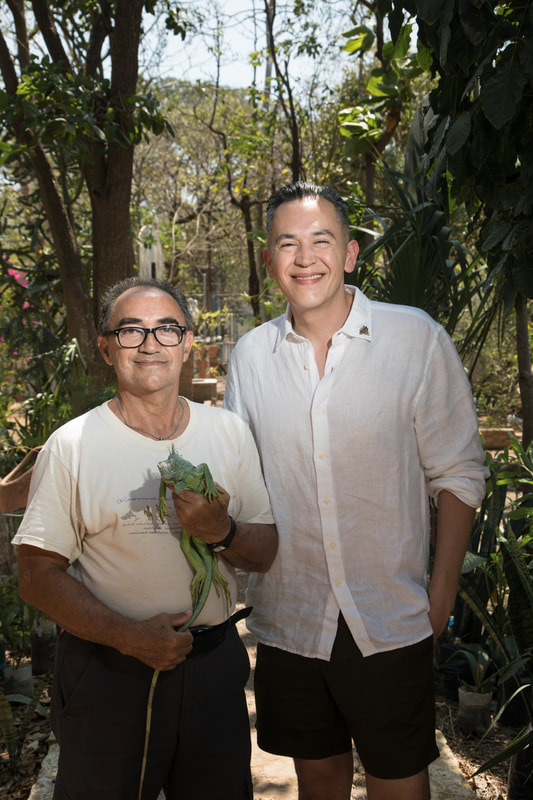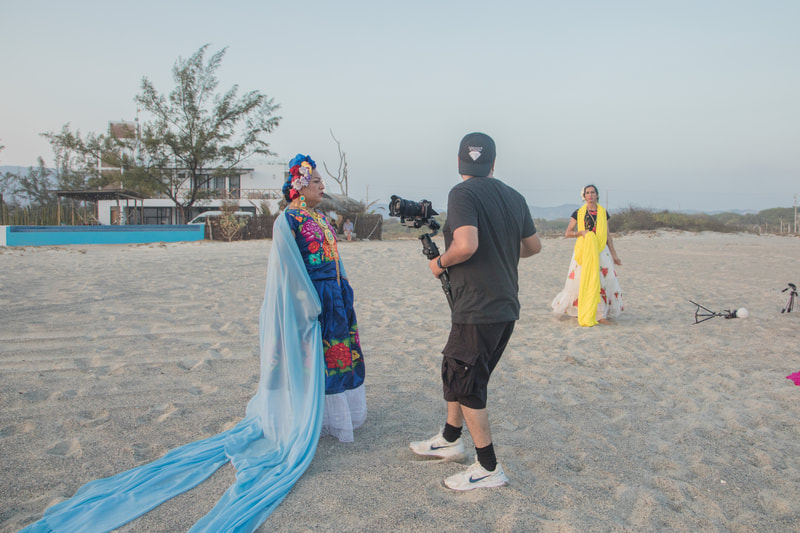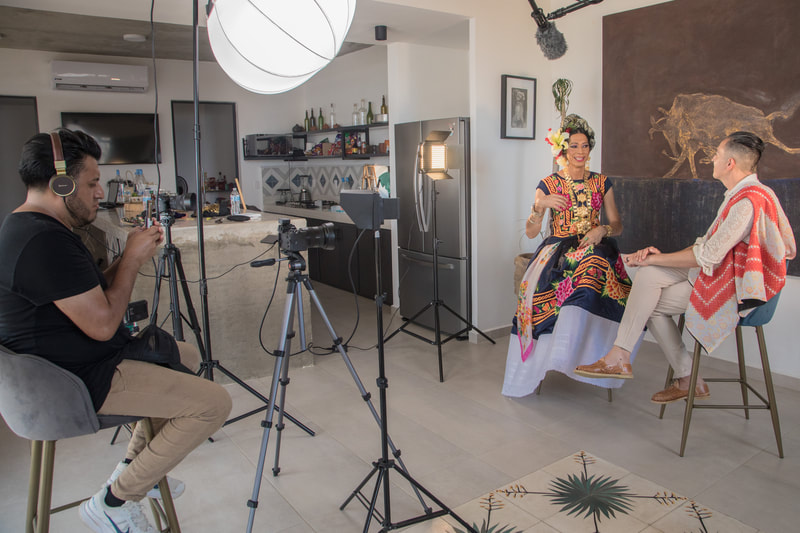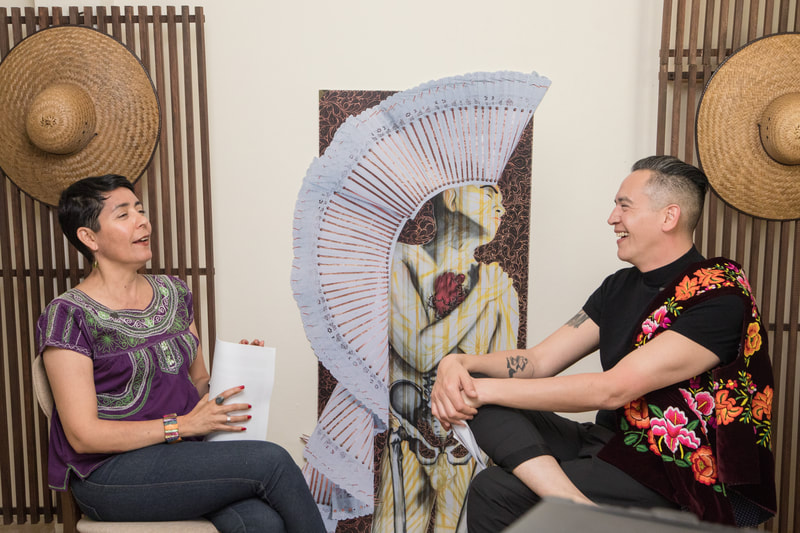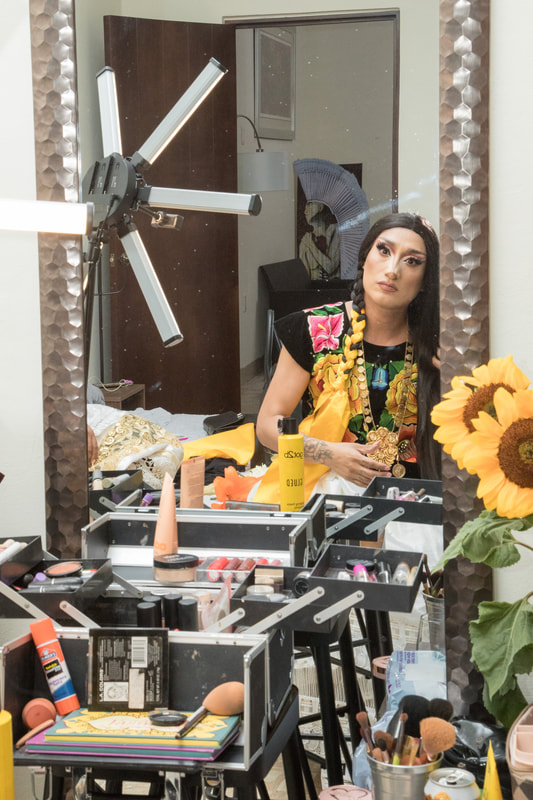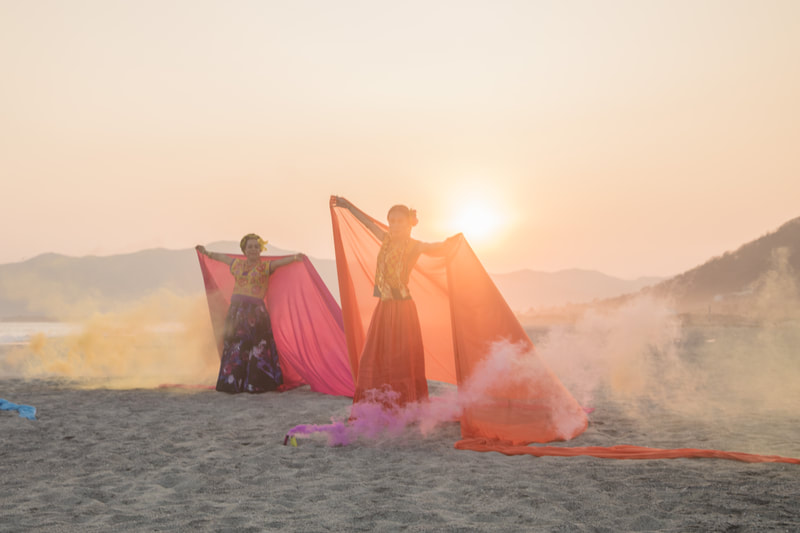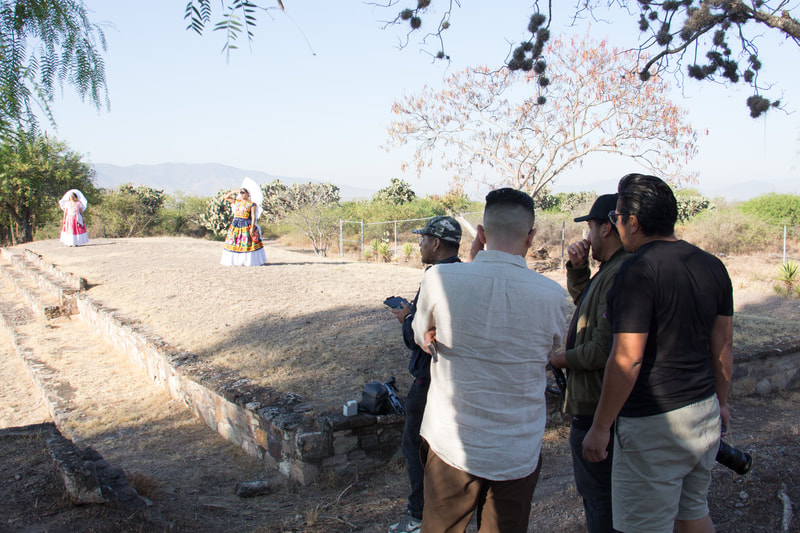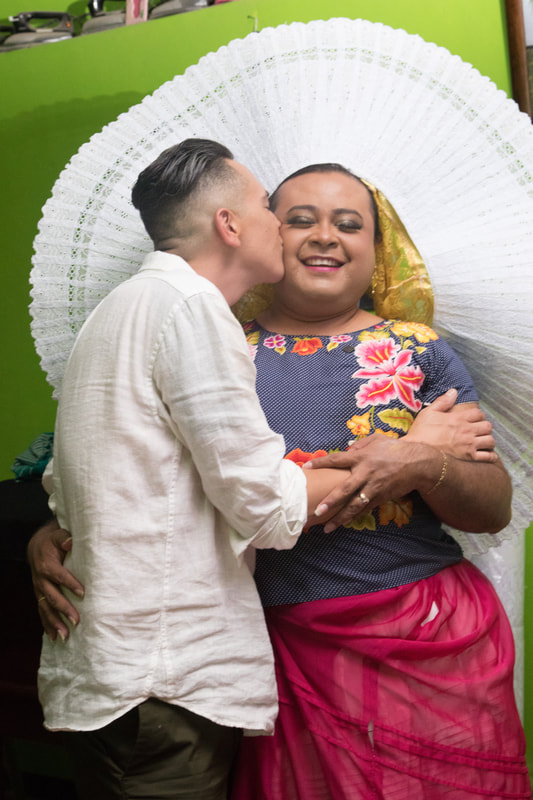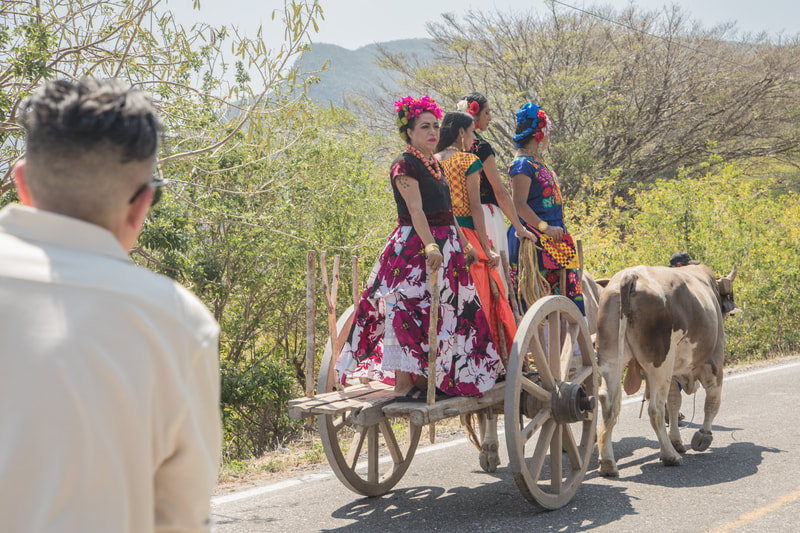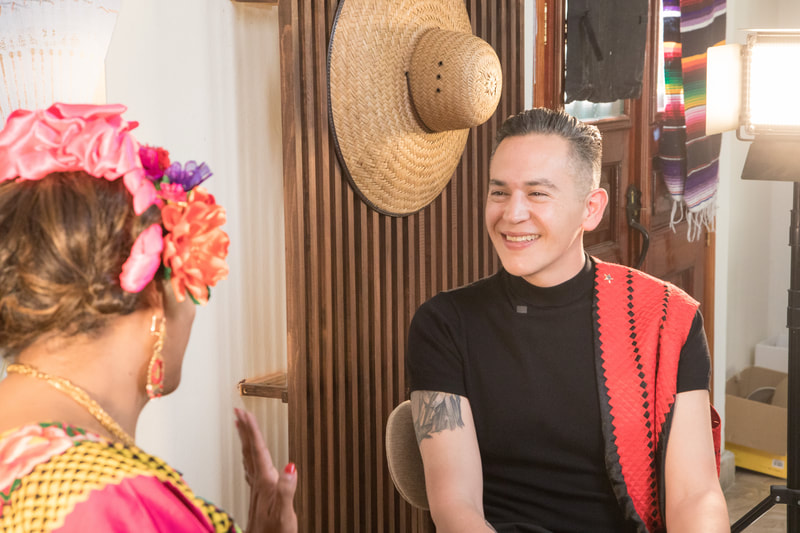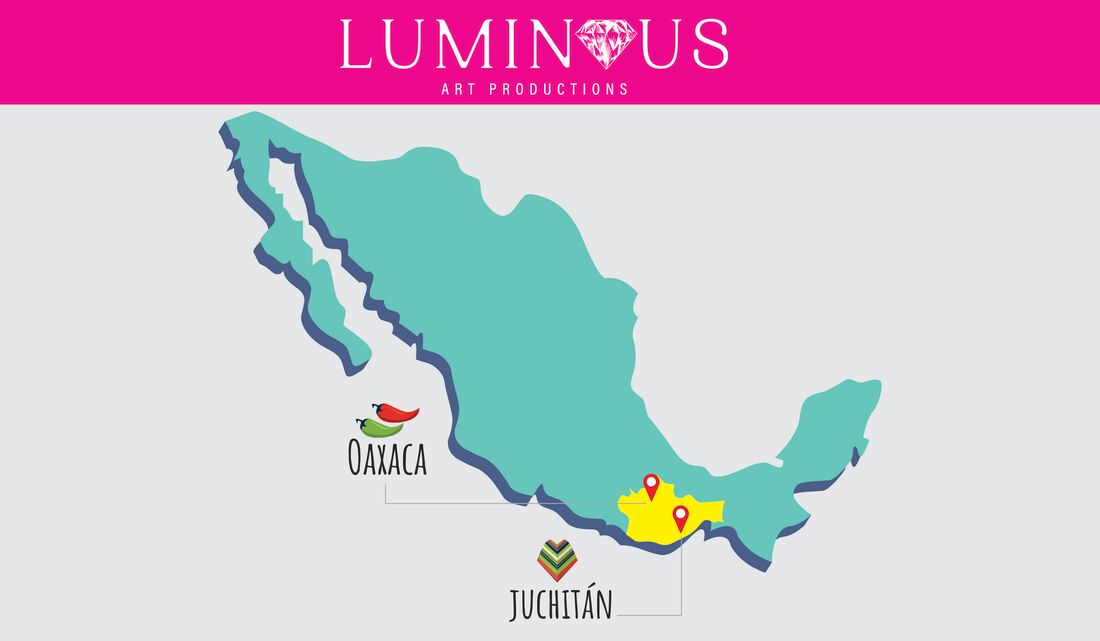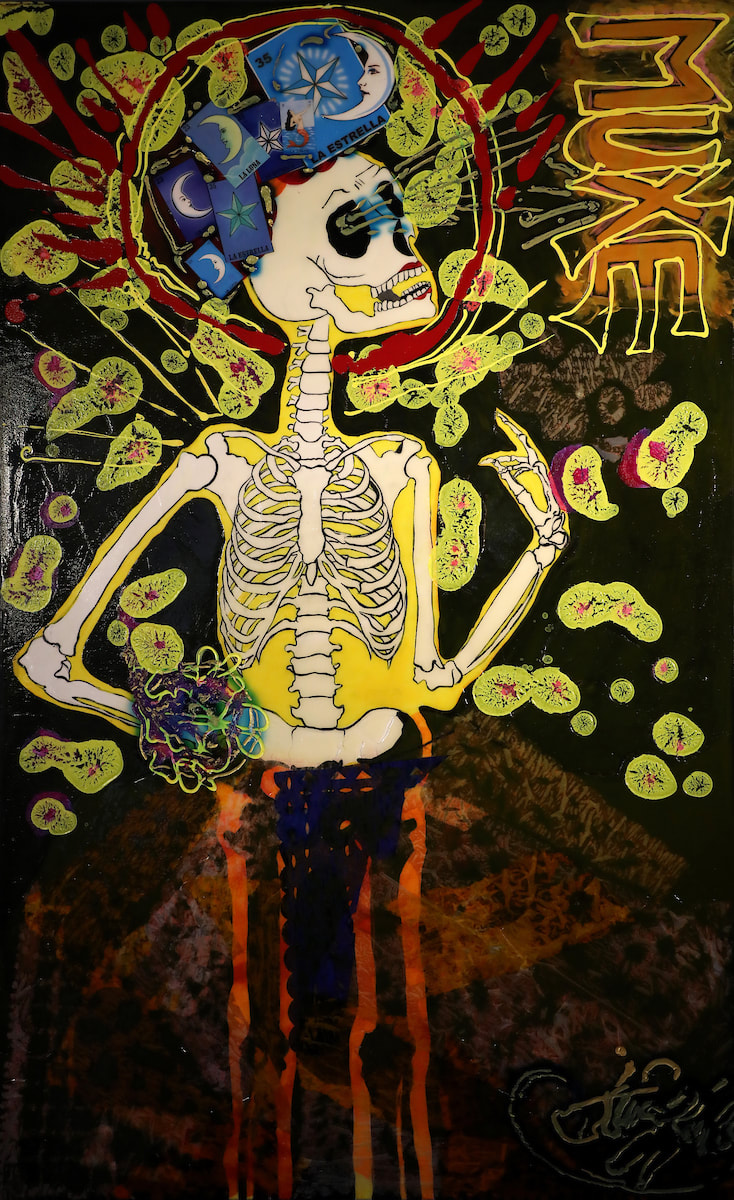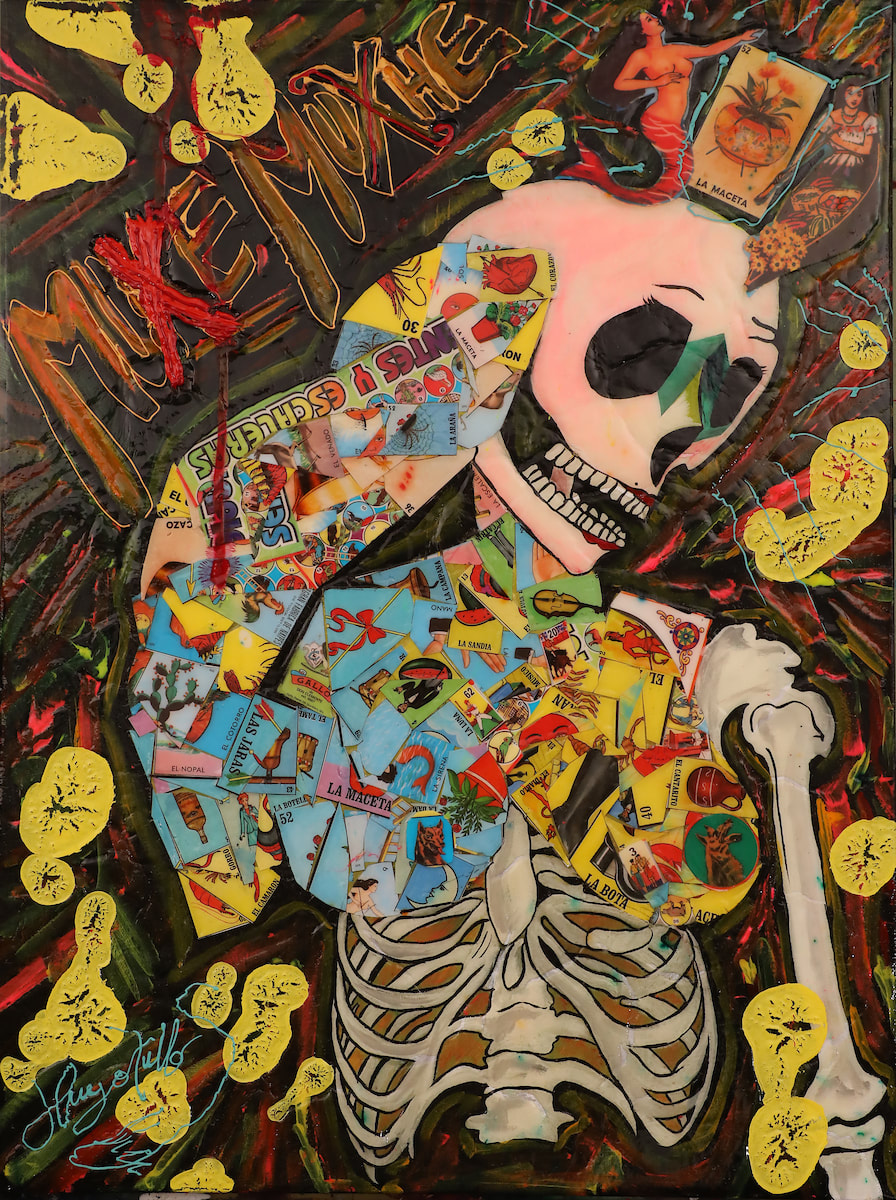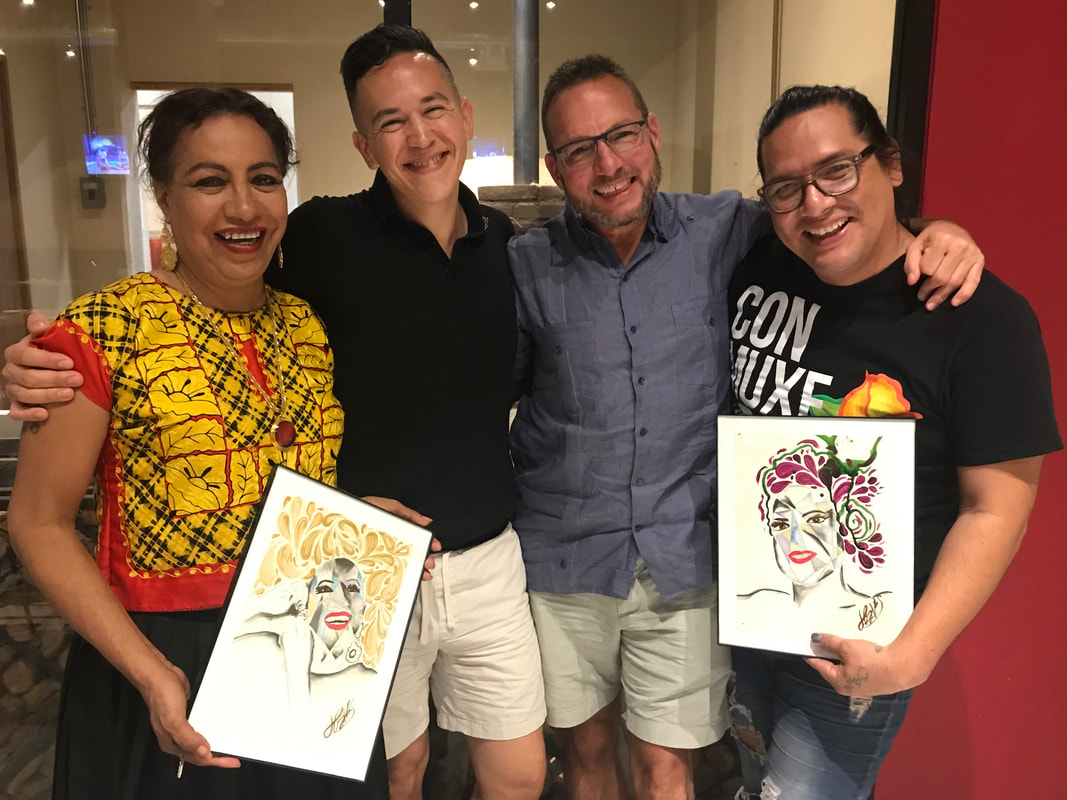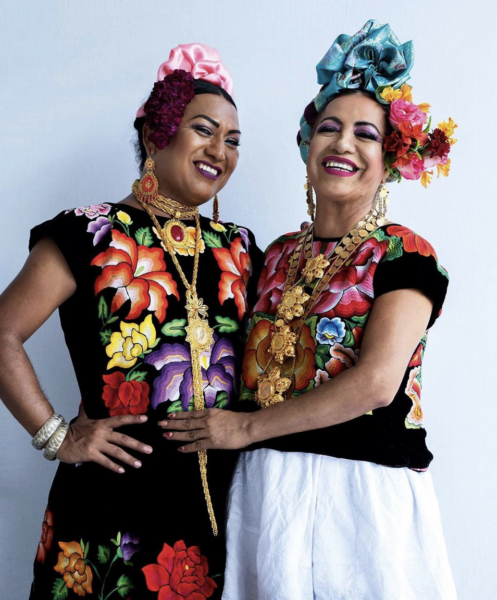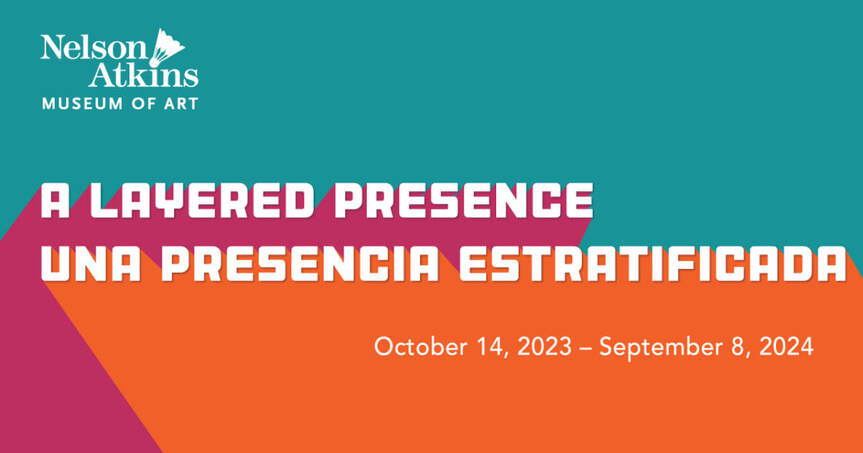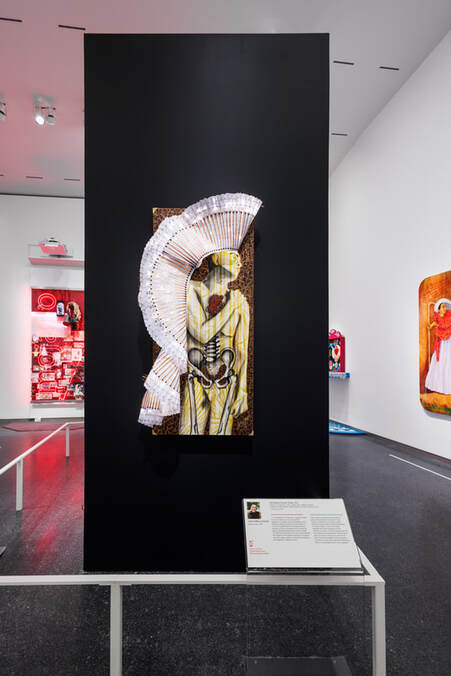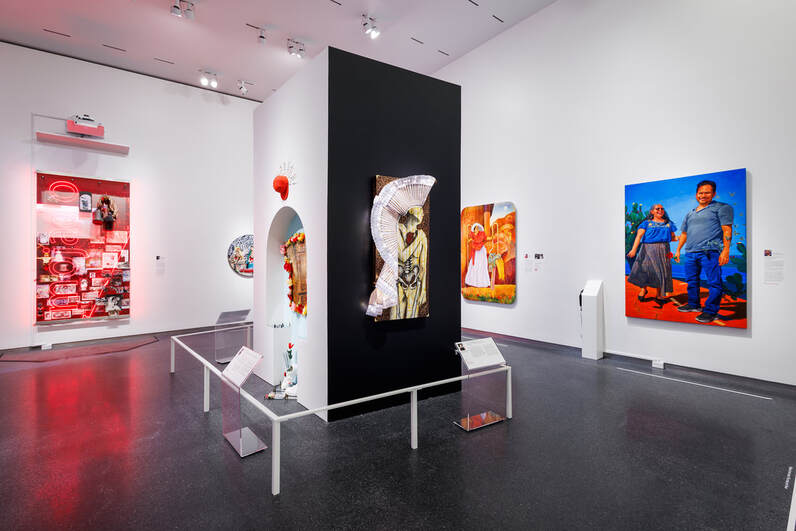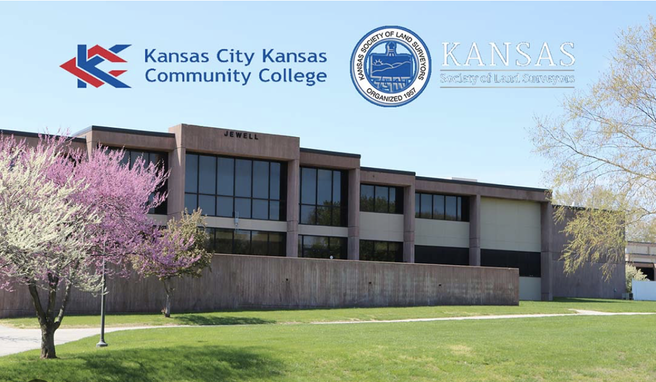"I wanted to create a documentary as a supporting artifact depicting just as my art does the Language of Art & Culture of the Muxe community."
Hugo Ximello-Salido
Mexican artist
Mexican artist
~WORLD PREMIERE~
Friday, June 28th- 7:00PM CT at
The Nelson-Atkins Museum of Art
4525 Oak St, Kansas City, MO
"As part of my ongoing effort to celebrate and explore Mexican culture through art, I have been greatly inspired by Muxe - one-of-a-kind individuals who are assigned male at birth but grow up to dress and behave in ways traditionally associated with women. While there is some overlap with the transgender community, Muxe exist within a particular cultural context in Oaxaca, Mexico. They are not transgender women, as they don’t identify as women; they identify as Muxe. The Zapotec culture, concentrated in Oaxaca, is dominantly Catholic today and yet accepts Muxe as a vibrant and even necessary part of the community."
Hugo Ximello-Salido
Mexican artist
Mexican artist
MUXE: The Language of Art & Culture
Screening and Meet the Director
Screening and Meet the Director
Join us for the screening of the new documentary with an introduction and Q & A with the producer and director, Hugo Ximello Salido. MUXE: The Language of Art & Culture documents his efforts to learn about Muxe culture, appreciate its singular history and contemporary expression, and to help share its beauty with the world. The film illustrates Ximello-Salido’s artistic journey through the perception of gender fluidity in the state of Oaxaca, directly connecting with his artistic approach through 2D & 3D artwork. Presented in commemoration of Ximello-Salido’s Muxe sculptural work on display in the featured exhibition, A Layered Presence, Una presencia estratificada featuring 22 local artists at the Nelson-Atkins and Pride Month.
JOIN US prior to the premiere of MUXE: The Language of Art & Culture at 5:30PM to Celebrate Together with Mariachi band Estrella KC performance & refreshments at Bloch Lobby.
Behind the Cameras....
From the Artist:
I first experienced Oaxaca, Mexico as a 15 year old, traveling from my home in Guadalajara during a crucial time in my discovery of my sexuality. The vibrant culture in Oaxaca informed my journey to self-acceptance.
Years later I would visit Oaxaca again - as an adult and an artist, now living in the American Southwest - and meet the Muxes. I encountered Felina and Rubi in Juchitan, and although I had little prior knowledge of Muxe and their culture, I was immediately struck by the enigmatic beauty and power that they brought to their daily lives.
I remembered my journey to Oaxaca as a young man and was immediately inspired to celebrate and share in this unique and vital community - a fusion of Zapotec culture and colonial influence that created a place where gender fluidity could blossom, where self-expression could create beauty, and where art and life could converge.
This meeting was the beginning of a new journey - an effort to learn about Muxe culture, appreciate its singular history and contemporary expression, and to help share its beauty with the world.
I first experienced Oaxaca, Mexico as a 15 year old, traveling from my home in Guadalajara during a crucial time in my discovery of my sexuality. The vibrant culture in Oaxaca informed my journey to self-acceptance.
Years later I would visit Oaxaca again - as an adult and an artist, now living in the American Southwest - and meet the Muxes. I encountered Felina and Rubi in Juchitan, and although I had little prior knowledge of Muxe and their culture, I was immediately struck by the enigmatic beauty and power that they brought to their daily lives.
I remembered my journey to Oaxaca as a young man and was immediately inspired to celebrate and share in this unique and vital community - a fusion of Zapotec culture and colonial influence that created a place where gender fluidity could blossom, where self-expression could create beauty, and where art and life could converge.
This meeting was the beginning of a new journey - an effort to learn about Muxe culture, appreciate its singular history and contemporary expression, and to help share its beauty with the world.
NOTE: The documentary MUXE: The Language of Art & Culture was filmed back in 2020 during Covid-19. Due to the pandemic many establishments including archeological sites were closed. In March of 2024 artist, producer & director Hugo Ximello-Salido and his talented team embarked once more in the journey of the discovery of Gender Fluidity.
The Documentary MUXE: The Language of Art & Culture was filmed in 31 locations in Oaxaca de Juarez thought The Isthmus of Tehuantepec, involving 22 interviews in the discovery of Gender Fluidity.
|
While there is some overlap with the transgender community, the Muxes exist within their own cultural context and gender identity in the city of Oaxaca, Mexico. The Muxes constitute a completely separate category of gender identity based on gender attributes, or third gender. Unlike many transgender persons in the United States, the Muxes are highly respected in their community and are said to bring good luck and fortune to those who surround them. The Muxe culture embodies a complex identity that beckons to be brought to light.
Muxe, 2018
In the state of Oaxaca in the south of Mexico, there is a region called Juchitan de Zaragoza with a population of 120,000, 80% of whom speak the native language, Zapoteco. There are no gendered pronouns in the Zapotecan language, which goes hand in hand with the prevalence of Muxe. A Zapotecan legend tells that San Pedro went to spread the seeds of life around the world. In one bag he had the men’s seeds, in another the women’s seeds, and in a third bag he had the Muxe’s seeds. He spread some of each across the world, but once he got to Juchitan, one of the bags broke - the Muxe’s bag. This is why many people think that Muxes in Juchitan are more visible and have the liberty to dress, walk, and act how they like. There is greater cultural understanding an acceptance of Muxe in Juchitan, but where ignorance is present there will always be some amount of discrimination. Juchitan de Zaragoza is the only place where you can find Muxes and their value is linked to the ancestral beliefs of the Zapotece culture. This community has an innate and unique understanding of gender fluidity and social and sexual liberation tied to its roots as an indigenous culture of Mexico.
Muxe-Muxe, 2019
|
Juchitan de Zaragoza, Oaxaca 2020
As a Mexican, I bring forth my heritage as a crucial component to keep my culture alive.
As an artist, I am fascinated by the dialogue between different cultures and traditions. By exhibiting in Mexico, the United States and upcoming European sites, I’ve found inspiration in the intersection of diverse communities and gained an appreciation for worldly interactions. I explore personal experiences, emotions, and connections through the lens of my past and present in order to create a vibrant future. Through my work, I strive to increase social awareness of the many parts of my intersectional identity and experience as a Mexican member of the LGBTQ community. Through each piece, I seek to convey a unique yet universal sense of being, feeling, or thought. I hope to challenge stereotypes, commercialization and commodification, and the arbitrary barriers we create between our shared humanity.
Vouge Mexico ,2019
Muxes don’t have to “come out” to their families, since theirs is considered a natural identity. The discovery of whether a male child will be a Muxe turns into a collective one, allowing friends and family to participate in the experience. Muxe often hold skilled jobs in their communities, such as hairstylists, chefs, seamstresses, and also care for their parents and other elders. They become the guardians of the family in every aspect of the word.
The main purpose of this project is to research the Muxe community and immerse myself in their culture, beliefs, and views on gender. Through this endeavor, I hope to gain a better understanding of Muxe and Zapotecan culture, which I will then translate onto the canvas in a series of art pieces intended to celebrate Muxe and illuminate this unique community for a broader audience. Documenting this journey is an essential part of the project. I’m planning to travel to Juchitan and spend two weeks with a community of Muxe. I will also visit Oaxaca City and Huatulco to experience more of Zapotecan culture and speak with local experts to broaden my understanding. In addition to learning and collaborating with that community, I will create initial sketches and develop ideas for the resulting project to be shared in Kansas City and elsewhere. I hope this will be a powerful way to create deeper knowledge and social awareness of this unique facet of Mexican culture and its roots, while at the same time exploring the larger understanding of gender fluidity across cultures. I want to discover how we can enrich our appreciation of our local transgender, non-binary, or “third gender” (two-spirit) individuals and communities through valuing the lives and experiences of Muxe.
Through educating the American public about the unique experiences of Muxe, I hope to honor this aspect of Mexican culture in a way that also broadens the horizons of the viewer, connecting art and culture to inspire thought and discussion about sexuality and gender both here and abroad. I also aim to subvert the commercialized model of Mexican art and better represent its full spectrum, from folk art to “fine” art and beyond. |
Follow us for Daily Content & Future Events ?
Local Artists with Latin American Ties featured in Nelson-Atkins Exhibition A Layered Presence / Una presencia estratificada Addresses Wide Range of Issues
Artists and Art are Multilayered
Each artist in this exhibition is a nuanced individual, with many layers informing their identity and the stories they tell through their art. Among them are their experiences, passions, and roles in our community. These layers are interwoven with strong personal ties to Mexico, Cuba, the Dominican Republic, Guatemala, Colombia, Uruguay, and Peru.
Like the artists themselves, their art is also multifaceted—composed of layers of subject matter, materials, and meaning. At the intersection of these layers, there is evidence of lived experiences. Artists also reckon with immigration and LGBTQIA+ issues as well as address family dynamics, ancestral relationships, healing, place, and more. While some of these layers reveal, others purposefully protect and conceal.
The power to authentically tell one’s own story is significant. It can foster connection, promote understanding, preserve history, and signify resilience. For this exhibition, the artists wrote labels to accompany their art and recorded audio interviews.
Each artist in this exhibition is a nuanced individual, with many layers informing their identity and the stories they tell through their art. Among them are their experiences, passions, and roles in our community. These layers are interwoven with strong personal ties to Mexico, Cuba, the Dominican Republic, Guatemala, Colombia, Uruguay, and Peru.
Like the artists themselves, their art is also multifaceted—composed of layers of subject matter, materials, and meaning. At the intersection of these layers, there is evidence of lived experiences. Artists also reckon with immigration and LGBTQIA+ issues as well as address family dynamics, ancestral relationships, healing, place, and more. While some of these layers reveal, others purposefully protect and conceal.
The power to authentically tell one’s own story is significant. It can foster connection, promote understanding, preserve history, and signify resilience. For this exhibition, the artists wrote labels to accompany their art and recorded audio interviews.
The Finesse of Gender Fluidity, 2023
|
Hugo Ximello-Salido Mexican, born 1982 The Finesse of Gender Fluidity, 2023 Acrylic, ink, tinted resin, brass, copper tape, nailstacks, textiles (resplandor/huipil grande) copper lights, mixed media on canvas I am interested in the intersection of gender fluidity and cultural traditions. The huipil grande, or resplandor, is a majestic ancestral headdress of the indigenous Zapotec peoples of Oaxaca, Mexico. It crowns the exposed bones of the painted figure, echoing La Catrina, the sacred Día de los Muertos symbol, representing the duality of life and death. The lettering on the sides of the canvas acknowledges the presence of third-gender expression throughout the world, deeply inspired in particular by the Muxe, a third-gender in Zapotec culture. |
Ximello-Salido’s Muxe series is currently being displayed in various galleries and museums in the states of Tennessee, Kansas, Virginia, Missouri, New Mexico among others.
The Finesse of Gender Fluidity will be on display until September 8th at the Nelson-Atkins Museum of Art. The artist Hugo Ximello-Salido has donated this sculptural artwork reflecting language, culture & tradition to Kansas City Kansas Community College’s permanent art collection.
Ximello-Salido's tactile & textile sculptural artwork installation "The Path to Gender Fluidity" is currently displayed at KCKCC art gallery since May 2022, later to be displayed at Corazon Latino exhibit in Tennessee 2024.
From México via the Midwest
by Brian Sanford
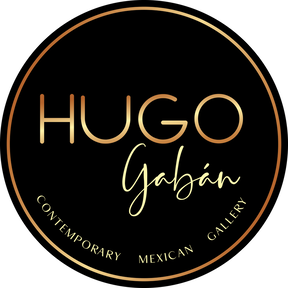
Guadalajara, Mexico, is almost exactly a day’s drive — 24 hours — from Santa Fe. In terms of the art and culture, it might as well be a world away.Artist Hugo Ximello-Salido grew up in the city, the capital of the state of Jalisco, and showcases Mexican contemporary art at his new downtown Santa Fe gallery and studio, Hugo Gabán.
The inspiration for the “Hugo” part of the name is obvious. As for gabán, it’s a traditional textile worn in Mexico, Ximello-Salido says.
“From artists like José Guadalupe Posada and Remedios Varo to Frida Khalo and Gabriel Orozco, gabán symbolizes Mexican heritage, culture, and traditions,” he says via email. He operated a business of the same name in Kansas City, Missouri, and opened the Santa Fe version in November 2023. Ximello-Salido moved to Northern New Mexico in 2022 — he praises the region’s understanding of culture and ethnicity — and opened a studio and gallery at 201 N. El Rancho Road. He creates art Mondays through Thursdays in that space, about 3 miles from Hugo Gabán, and welcomes visitors there; contact information is below.
The inspiration for the “Hugo” part of the name is obvious. As for gabán, it’s a traditional textile worn in Mexico, Ximello-Salido says.
“From artists like José Guadalupe Posada and Remedios Varo to Frida Khalo and Gabriel Orozco, gabán symbolizes Mexican heritage, culture, and traditions,” he says via email. He operated a business of the same name in Kansas City, Missouri, and opened the Santa Fe version in November 2023. Ximello-Salido moved to Northern New Mexico in 2022 — he praises the region’s understanding of culture and ethnicity — and opened a studio and gallery at 201 N. El Rancho Road. He creates art Mondays through Thursdays in that space, about 3 miles from Hugo Gabán, and welcomes visitors there; contact information is below.

